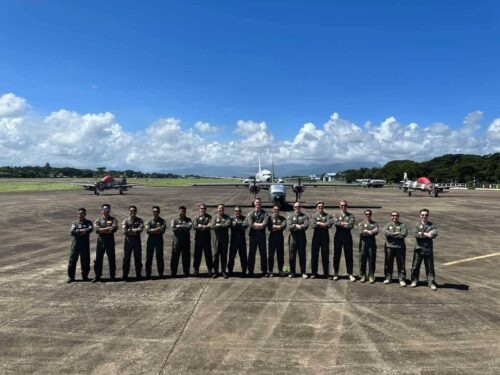In a significant display of regional cooperation, the Armed Forces of the Philippines (AFP) and the Australian Defence Force (ADF) conducted a joint air patrol over the South China Sea as part of their inaugural Maritime Cooperative Activity. The operation involved a fleet of aircraft, including the Philippine Air Force’s A29B Super Tucano and N-22 Nomad, the Philippine Navy’s BNI2A aircraft, and the ADF’s P-8 Poseidon Maritime Surveillance aircraft.

Photo: Western Command, AFP
Departing from the Antonio Bautista Air Base ramp in the City of Puerto Princesa, Palawan, the patrol aimed to enhance maritime interoperability and deepen strategic partnerships between the two nations. The activity was initiated following an agreement signed by President Ferdinand R. Marcos Jr. and Australian Prime Minister Anthony Albanese on Sept. 8 to strengthen defense ties.
However, the joint patrol faced an unexpected development as two Chinese fighter jets were detected “orbiting” the Philippines’ A-29B Super Tucano in the vicinity of Hubo Reef in the West Philippine Sea. Despite the presence of the Chinese jets, the patrol continued without any direct incidents. The West Philippine Sea is a term used by Manila to refer to waters in the South China Sea falling within its exclusive economic zone.
The Philippines, reaffirming its commitment to a rule-based international order, asserted its right to conduct joint patrols with allies. Philippine military chief Romeo Brawner emphasized that these patrols aim to promote regional stability and adherence to established norms.
This event follows closely after joint patrols with the United States, highlighting the Philippines’ strategic positioning amid rising tensions in the South China Sea. The monitoring by Chinese fighter jets underscores the complex geopolitical dynamics in the region, as nations navigate contested waters and assert their interests.
For more information, hit the Source below